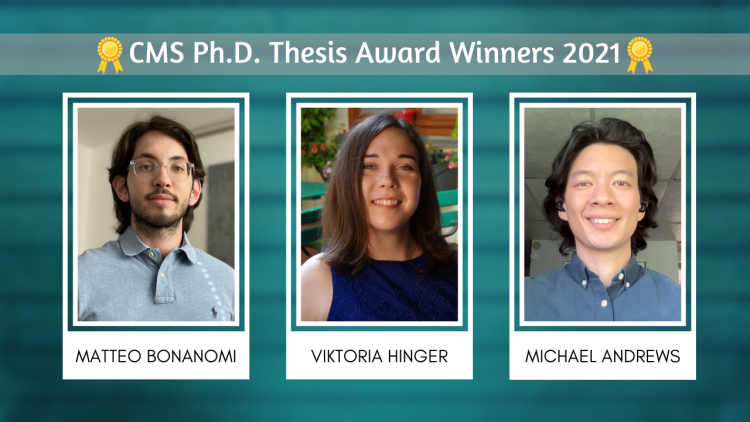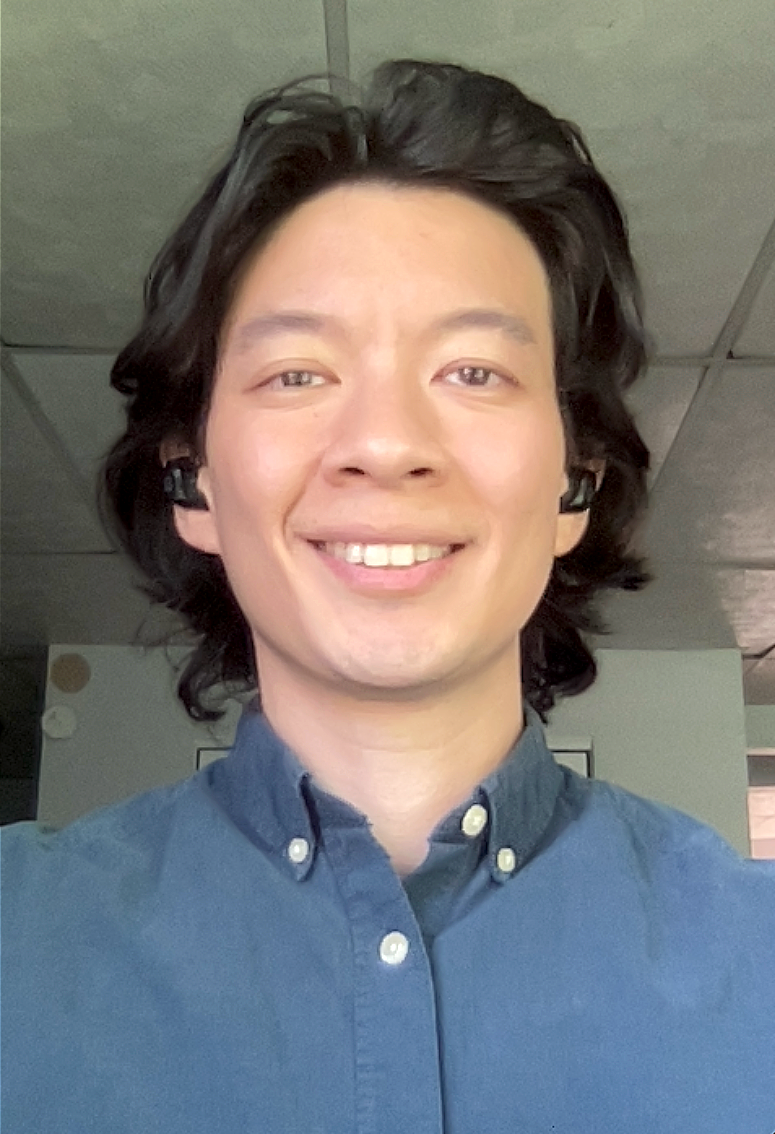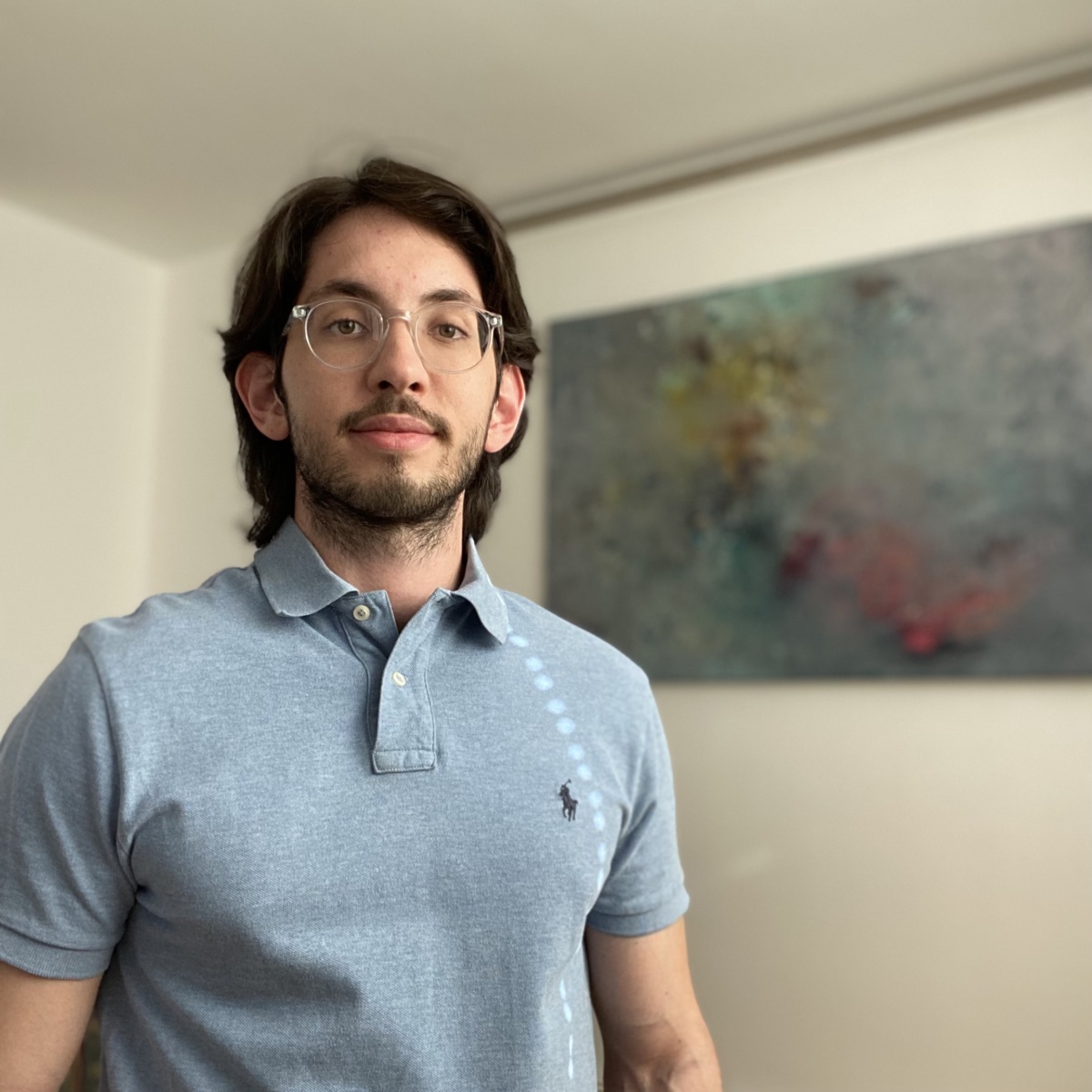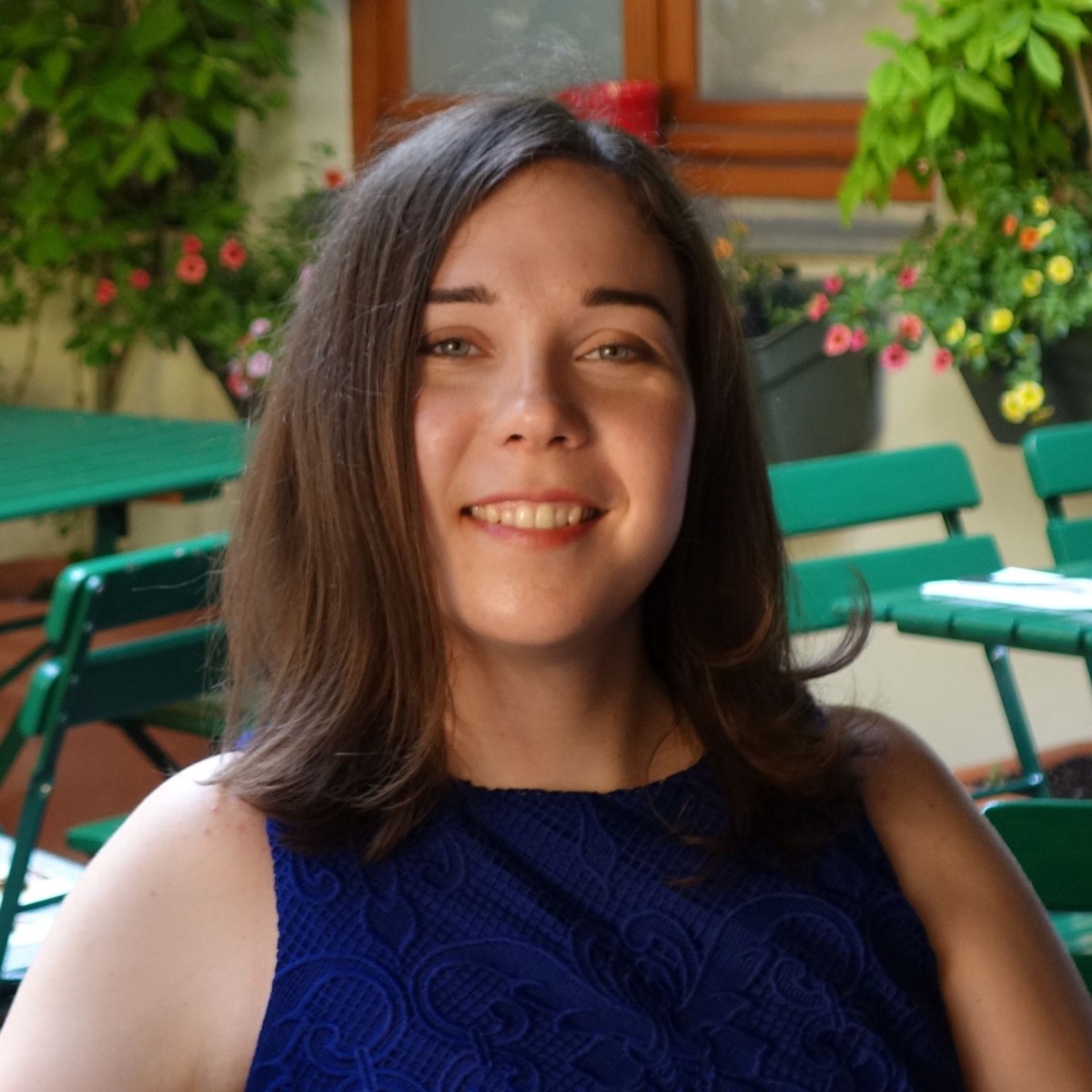
Each year, the CMS collaboration recognizes exceptional Ph.D. student work with the Thesis Award. The theses distinguished by the award may also provide inspiration and motivation for the new generations of students.
All Ph.D. students who conducted work in association with any CMS-related subject and defended their thesis between November 2020 and October 2021 were eligible to be nominated by November 30th, 2021.
To select the best theses, a Thesis Award committee of 29 CMS scientists was appointed by the Collaboration Board (CB) Chair.
Out of 25 nominations received this year, three winners were selected by the committee followed by the CB endorsement. The evaluation was based on the originality of the thesis author’s personal contributions, clarity, quality of content, and impact within CMS and in the broader context of high-energy physics.
The award includes a plaque of acknowledgment, coverage of expenses to present the thesis results at an international conference, as well as a proposal to have the thesis endorsed by CMS for publication in the Springer Theses series that honors outstanding Ph.D. theses in physics.
“The Thesis Award is a way to celebrate the exceptional work performed by all students in all areas of interest for CMS. It is also an occasion for senior collaborators to be reminded that providing inclusive and supportive working environments allows students to excel and deliver exceptional work. The awarded theses offer examples of exceptional student work, also as a result of high quality support by collaborating groups and institutions, for the benefit of the collaboration as a whole.” - Marta Felcini, Thesis Award Committee Chair.
Let’s discover each of the awardees!
 Michael Andrews, Carnegie Mellon University
Michael Andrews, Carnegie Mellon University
The thesis developed a novel algorithm for particle reconstruction. It uses deep learning models trained on “raw” detector data to measure the invariant mass of merged pairs of photons, a measurement not previously possible at CMS. In particle physics, deep learning models are traditionally trained on highly processed data. This work was the first application of a deep learning model trained on low-level detector data at CMS. It demonstrated the performance breakthrough that could be achieved under this new paradigm.
This so-called end-to-end particle reconstruction technique enabled the first measurement of its kind at CMS and was used in the thesis to search for dark matter candidates in hypothetical decays of the Higgs boson.
Events resembling the decay of the Higgs boson to two photons, one of the original discovery modes of the Higgs boson, were studied to investigate the possibility that these events were hiding a dark matter candidate in plain sight. Although this did not turn out to be the case, the technique developed in the thesis opens the door to other never-before-possible measurements at the LHC, which are planned for future work.
 Matteo Bonanomi, LLR - Institut Polytechnique de Paris
Matteo Bonanomi, LLR - Institut Polytechnique de Paris
In my thesis, I present the results of the analysis of CMS data in the so-called "golden channel", where a Higgs boson decays into two Z bosons which consequently decay into two pairs of opposite sign leptons. This feature makes these kinds of events quite rare, but also easier to be identified over uninteresting, or "background", events.
In the years to come, the LHC will push even further its limits, entering the so-called High-Luminosity LHC (HL-LHC) phase. In my thesis, I also present the validation of the design and physics performance of what was once described as "perhaps the most challenging engineering project ever undertaken in particle physics": the silicon-based High Granularity Calorimeter (HGCAL), one of the CMS upgrades for HL-LHC.
In the years to come, I hope to contribute to the development of new analysis techniques that will allow us to characterize in more detail the Higgs sector and, possibly, unveil hidden secrets of the world of the "infinitely small".
 Viktoria Hinger, Institute of High Energy Physics of the Austrian Academy of Sciences and Vienna University of Technology
Viktoria Hinger, Institute of High Energy Physics of the Austrian Academy of Sciences and Vienna University of Technology
I am proud to have contributed to building two essential parts of the CMS detector for the upcoming exciting phase of particle physics in the high luminosity era of the LHC. I developed a compact set of test structures that allows assuring the quality of thousands of position-sensitive silicon sensors that will be part of the upgraded detector. The time of my Ph.D. – tough and wonderful as it was – affirmed my love for science and shaped my scientific interest in detector development. In the future, I want to expand my expertise and investigate new technologies and applications of silicon sensors in different fields of science such as high-performance x-ray detection at synchrotrons and free-electron lasers.

